Project Schedule Planning Essentials
Dive into the crucial aspects of project schedule planning, including defining activities, milestones, sequencing, and critical path analysis. Understand how to create a project schedule following scope planning and WBS development. Explore task dependencies and efficient scheduling techniques through real-world case studies and practical examples.
Download Presentation

Please find below an Image/Link to download the presentation.
The content on the website is provided AS IS for your information and personal use only. It may not be sold, licensed, or shared on other websites without obtaining consent from the author.If you encounter any issues during the download, it is possible that the publisher has removed the file from their server.
You are allowed to download the files provided on this website for personal or commercial use, subject to the condition that they are used lawfully. All files are the property of their respective owners.
The content on the website is provided AS IS for your information and personal use only. It may not be sold, licensed, or shared on other websites without obtaining consent from the author.
E N D
Presentation Transcript
Project Management Chapter 10: Project Schedule Planning
Project Schedule Planning The Project Schedule Defining Activities Case study of WBS development Activity definition and Task dependencies Leads and lags . . . continued on next slide
Project Schedule Planning (continued) Milestones Activity Sequencing Gantt Chart Network Diagram Critical Path
The Project Schedule A project schedule includes the sequence of activities, the duration planned for each activity, and relationships or dependencies between the beginnings and ends of different activities. The project schedule is created AFTER the scope planning has created the WBS BEFORE project resource planning
Review: Scope Planning WBS breaks down the deliverables into smaller units, ending with the work packages. A work package is a clearly defined activity or group of activities whose duration can be estimated.
Deliverables Decompose into Work Packages Shop for shoes Create guest list Tailoring and fitting Shop for dress Find caterer Cater the wedding Wait for RSVPs Mail the invitations Finalize the menu Print the invitations Choose the bouquet
Remember WBS follows 100% rule There is no sequencing of tasks in the WBS
Task Dependencies Finish-to-start
Task Dependencies Start-to-start
Task Dependencies Finish-to-finish
Types of predecessors External predecessors Outside the project, such as the previous party being out of the reception hall Discretionary predecessors Matter of preference: bridesmaids arrive before couple. Mandatory predecessors Cannot do the following task until the predecessor is done: invitations must be addressed before they can be mailed.
Leads and Lags Lag: One task must wait in relation to another task:
Leads and Lags Lead: The task must start before the predecessor is done:
Milestones A milestone is an important checkpoint usually completion of a major task or a major set of tasks. Target dates will be set later
Milestones in Wedding Plan Invitations Sent Menu Finalized Location booked Bridesmaids dresses fitted
Creating a Gantt Chart Gantt Chart is a horizontal bar chart with a list of activities on the left and a timeline on the horizontal axis. A traditional Gantt chart does not show dependencies; many current Gantt charts add the critical path and arrows to indicate tasks that precede other tasks.
Network Diagram Also known as PERT chart or PERT/CPM chart Illustrates task relationships Used to determine the critical path Software such as Microsoft Project can be used to create a network diagram.
Network Diagram: Activity on Arrow Alternative method More difficult to read and understand May require the creation of dummy activities when a task has multiple predecessors and multiple dependent tasks More mathematical in its illustration of activities and events.
The critical path When multiple paths exist through the network diagram, the path with the longest duration is called the critical path. If any task on the critical path is delayed, the project is delayed. Tasks NOT on the critical path have slack available. This is the amount of time the task could be delayed without delaying the completion of the project.
Critical Path Example In this example the critical path is A,B,C,D,E,F,I,L, and the earliest completion date for the project is the sum of the estimated times for all the stages on the critical path 28 weeks
Slack Slack is the amount of time a task could be delayed without delaying the completion of the project. Tasks on the critical path have zero slack. For tasks NOT on the critical path, work backwards from the project duration to determine the amount of slack.
Slack on Critical Path Example In this example the slack for task K is 2 weeks. If task K is delayed by less than two weeks, it will not delay the completion date of the project.
Types of Slack Total Slack Allowable delay of an activity without delaying project completion (usual meaning of Slack if not specified.) Free Slack Allowable delay of an activity without affecting the earliest start of any dependent (following) activity Safety Slack Remaining allowable delay of an activity if all predecessors finish as late as possible.
Network Diagram compared to Gantt Network diagram is more technical, helps determine the critical path Network diagram is not to a scaled timeline Gantt is easy to read and explain to non- technical people Gantt has a good method for graphically illustrating task progress and whether things are ahead of schedule or behind
Network Diagram compared to Gantt Project managers depend on network diagram to plan and to adjust Gantt is developed from network diagram for purposes of communicating the plan Both are easily produced from project management software
Finalizing the Project Schedule May have to negotiate with sponsor or adjust customer expectations Schedule will be impacted by Project Resource plans Monitor the critical path tasks most closely
Project Schedule Planning Summary The Project Schedule shows when each activity will take place and the dependencies between activities Activities or work packages are derived from the WBS, which was developed in Project Scope Planning. Task dependencies may be Finish to start Start to start Finish to finish Leads and lags . . . continued on next slide
Project Schedule Planning Summary (continued) Milestones are checkpoints Activity Sequencing is determined by the dependencies Gantt Chart is a horizontal timeline showing when each activity is scheduled, along with optional indicators of task progress Network Diagram helps Project Managers illustrate task dependencies and determine the critical path . . . continued on next slide
Project Schedule Planning Summary (continued) Tasks on the critical path have no slack If a critical path task is delayed, project completion will be delayed Tasks not on the critical path have slack. If a non-critical task is delayed by less than the slack, project completion will not be delayed. . . . continued on next slide
Project Schedule Planning Summary (continued) After the schedule is developed: Get approval from sponsor; may require some negotiations Next step will be to develop the project resource plan Project Resource Planning may cause schedule adjustments
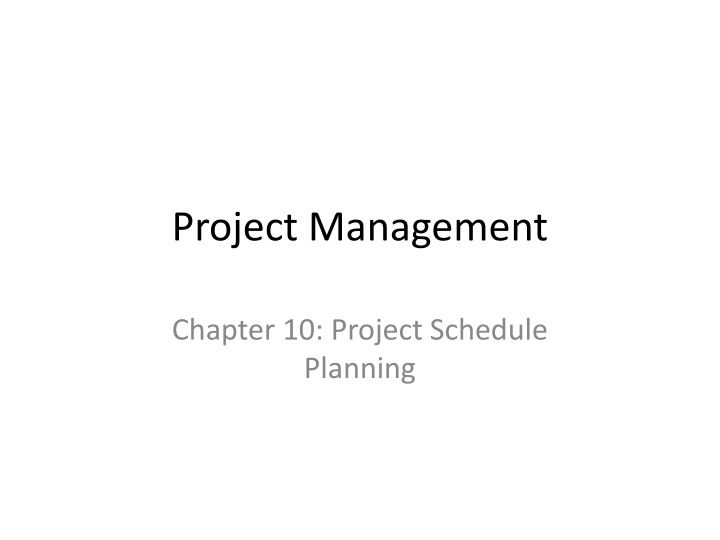

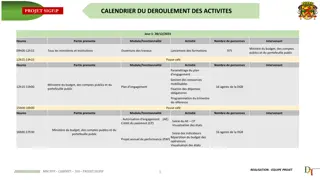

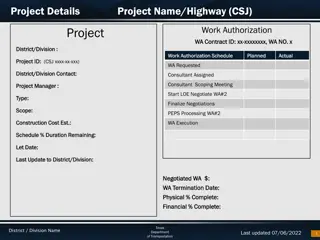


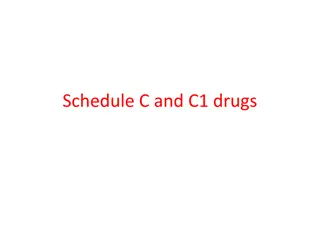

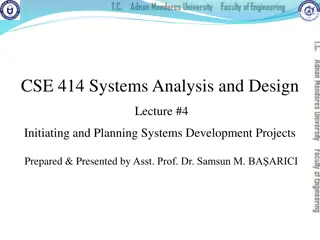

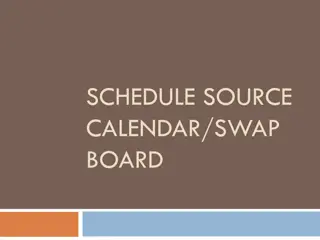

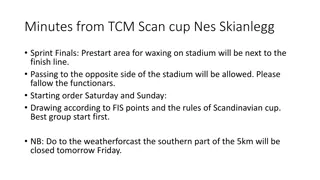

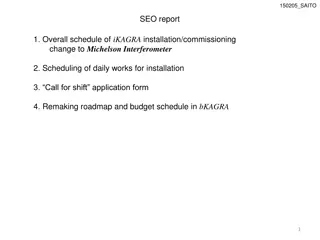



![Project Initiation Document for [Insert.Project.name] [Insert.Project.number]](/thumb/226757/project-initiation-document-for-insert-project-name-insert-project-number.jpg)



